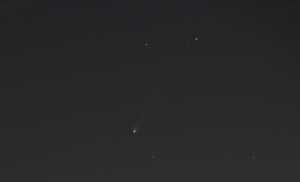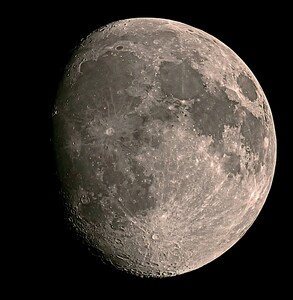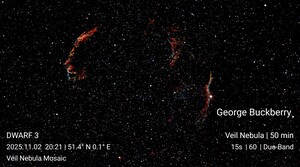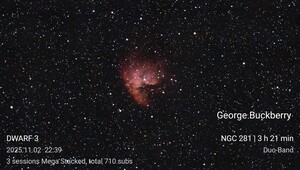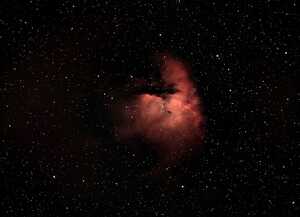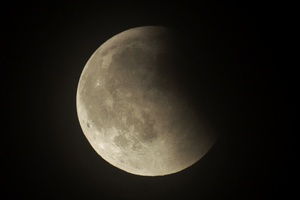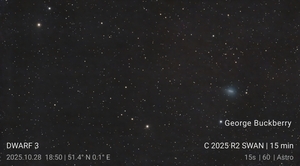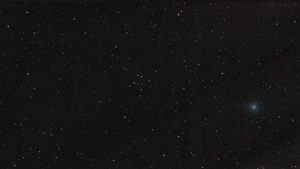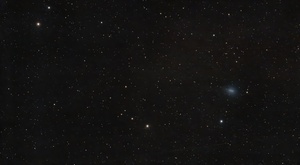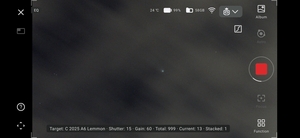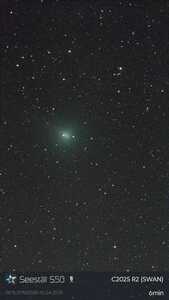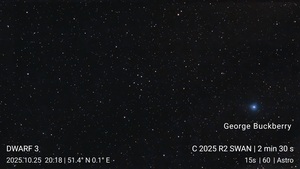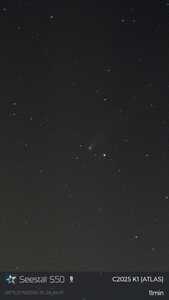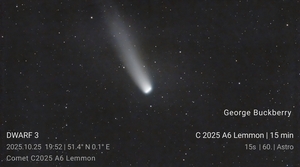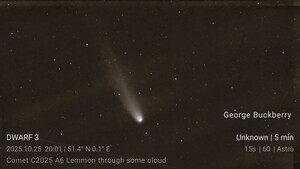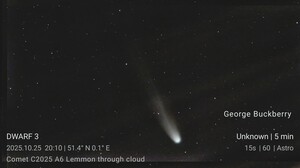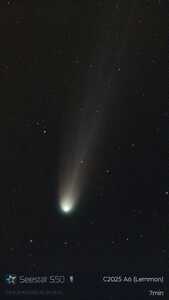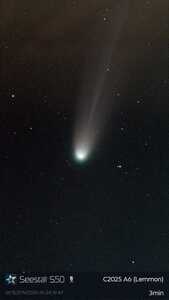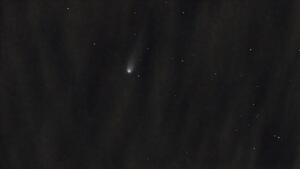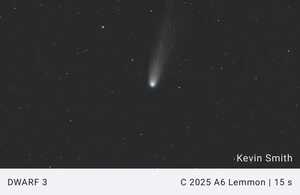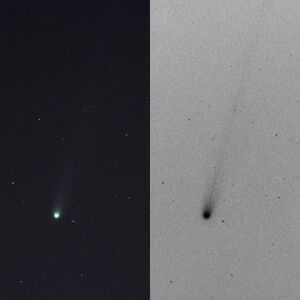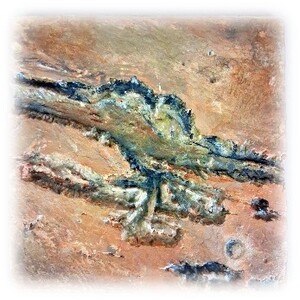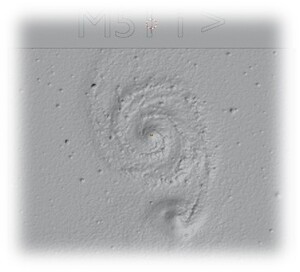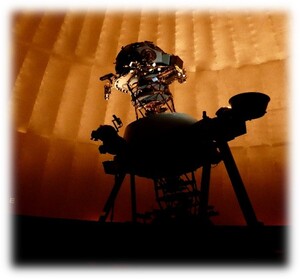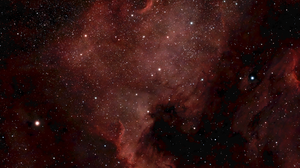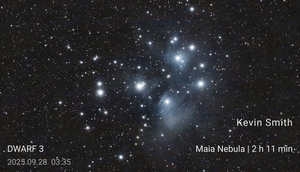Comet Lemmon, or C/2025 A6 (Lemmon), was discovered by astronomers at the Mount Lemmon Survey, in Arizona, on the 3rd January 2025.
The comet is currently low in the northwestern sky after nightfall in the constellation of Boötes, not far from the bright star Arcturus.
On the 24th Oct it will still be above Arcturus but near the star Izar. (Note: The handle of the Big Dipper points towards Arcturus.), and in the coming days it will move into the constellation Serpens.
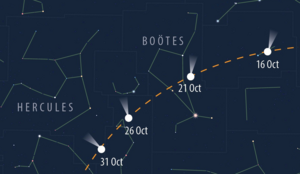
Sky chart showing the location of C/2025 A6 (Lemmon) at the end of October 2025. Credit: Astronomy Now magazine.
On the evening of the 21st Oct 2025, several CMHASD members managed to image the comet quickly through a gap in the clouds or with a thin veil of cloud.
CMHASD member George Buckberry captured the comet at 7:40pm using his Dwarf3 smart scope. His fantastic image below is made up of only 3 stacked images at 15S, gain 60 and Astro filter. Then run through Stellar Studio and no other processing.
The Water mark also shows NGC 5641 which was a little further West at the time George took the images of the comet.
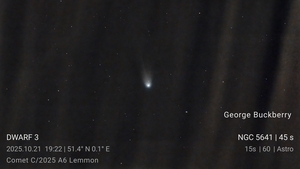
Kevin Smith captured the comet also using a Dwarf3 smart scope on the 21st Oct around the same time as George. His fantastic images are below.
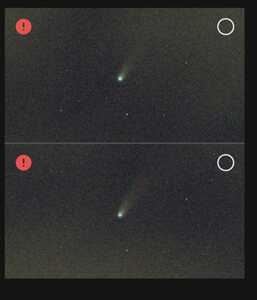
Honor Wheeler captured the comet at 7.19pm using a Canon M6II, Tamron 18-400mm, set at ISO3200, 3" and F6.3. Her superb image is below.
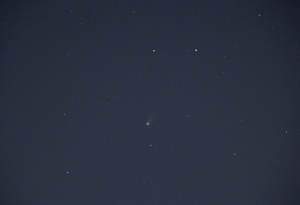
Finally member Jim Burchell captured the comet a little bit later on the 21st Oct at 20:19 BST. Jim used a Pentax KP set at F5.6, 20sec, 135 mm and iso 800 on a Skywatcher star adventure. His super image is below.
